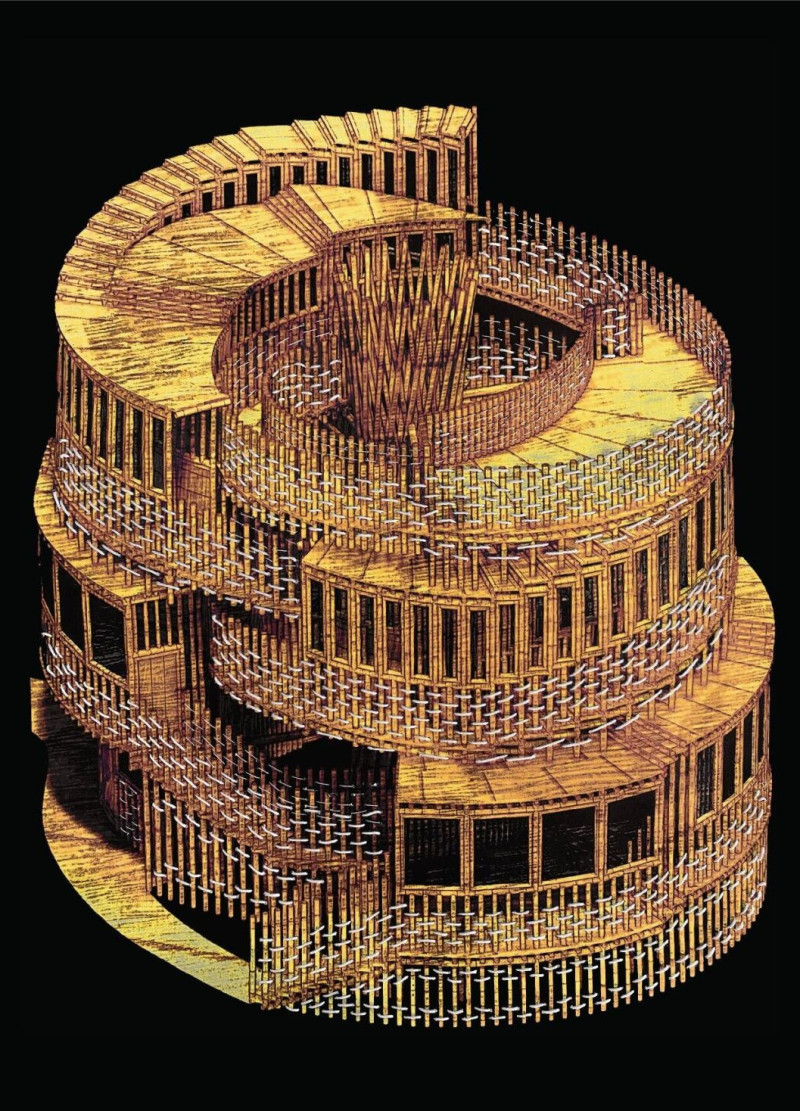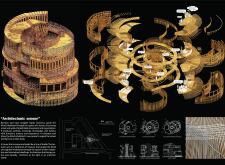5 key facts about this project
Unique Functional Aspects
The primary function of the "Architectonic Sensor" is to provide an inclusive environment for individuals who are visually impaired. The architecture engages users through its spatial organization and material selection, doing away with traditional visual cues inherent in conventional design. The layout incorporates a series of interconnected levels and curvilinear forms, allowing users to navigate with greater ease and confidence. The use of bamboo and rope as structural and navigational elements not only reflects sustainability but also enriches the tactile experience. Users can interact with surfaces that provide varied tactile feedback, promoting their ability to map the space cognitively.
Innovative Design Approaches
What sets this project apart from typical architectural designs is its keen focus on sensory engagement. Unlike standard designs that largely rely on visual elements, the "Architectonic Sensor" emphasizes the importance of touch and movement. The integration of tactile surfaces enables users to form a mental understanding of their surroundings through interaction, moving beyond conventional navigation. The design features diverse elevations, creating dynamic zones within the space that cater to different activities. This layered organization facilitates both exploration and social interaction, encouraging users to connect not only with the architecture but with each other.
The project seeks to redefine architectural praxis by illustrating how focused attention on sensory experiences can lead to an accessible and enriching environment. It serves as a potential model for future designs, showcasing how architecture can actively contribute to inclusivity.
For further insights, including architectural plans and sections, please explore the complete project presentation to gain a deeper understanding of the design’s innovative approach and its implications for contemporary architecture.























